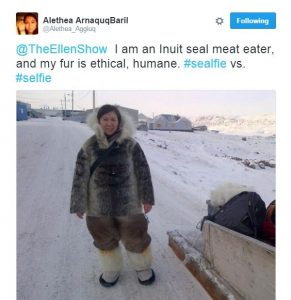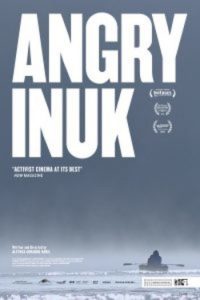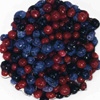One of the things that struck me from our readings in this module was the fight to include the “s” in Indigenous peoples. It seems so simple, but reading this made me realize that I have probably viewed Indigenous peoples as if they all had the same cultures and values. Since being made aware of this, it’s also made me realize that perhaps focusing on a specific group of Indigenous peoples would be better suited for the final project (as opposed to being general and missing the mark by lumping different cultural groups together as if they had the same values and culture). With that in mind, and after watching the Alluriarniq documentary, Stepping Forward, I’ve decided to focus on how Inuit youth are using digital storytelling to post about their lives, connect with others, and question/confront stereotypes.
1. Uploading selves: Inuit digital storytelling on YouTube
This article focuses on how Inuit youth use video-sharing sites and online spaces to post excerpts from their lives and connect with others. It looks into how Internet technology allows narrators to post expressions of Inuit self-hood that are self-produced. It puts forward the idea that by narrating their lives, Inuit youth are giving meaning to their experiences and through this, gaining a sense of control and agency over their world.
This video was created by Dina Wolfrey and is about her ties to Inuit culture. She discusses the death of her grandmother, and how in losing her, she lost her grandmother, teacher, and the last way to speak her Inuit language. She says today she is still “keeping her voice heard” by doing things that are a part of Inuit culture.
3. Inuit story telling with Michael Kasugak
Michael Kusugak tells a story from his youth about travelling with his family and the stories his grandmother would tell him.
While not directly relating to exposing stereotypes, I was very interested to come across this article which discusses the climate and environmental changes experienced in the north of Canada that are having huge impacts on the lives of Inuit, and could have devastating consequences for the Inuit youth population. It called to mind the video we watched this past week, March Point, which also used youth voices to ensure representation and sustainable adaptation strategies. It also discussed the negative stereotypes of small, remote, northern communities and how youth-led participatory videos can share experiences of living in the northern communities and share their experience of living in the community, and the pride they have in their community.
This article describes a case study that demonstrates how an indigenous community used digital storytelling to engage community members, celebrate stories and lived experiences, and address issues such as colonization and climate change in northern communities.


